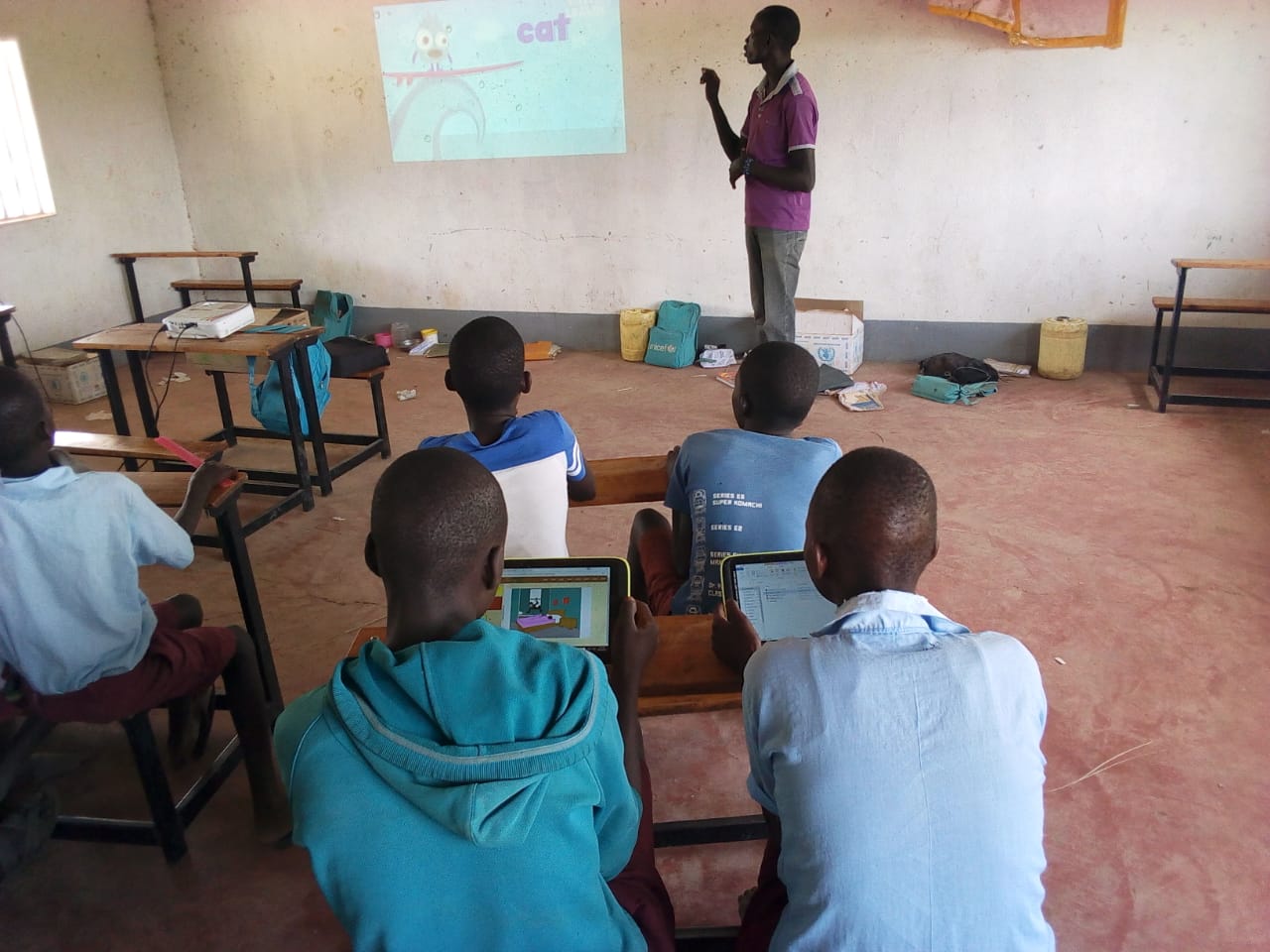Solar access helps rural Kenyan schools improve lesson quality and student performance
Every teacher knows that education gives children a fighting chance to break the poverty cycle, but many rural schools across sub-Saharan Africa do not have the energy access needed to power lighting, computers and other equipment. As electricity in schools has such a marked impact on teacher motivation, lesson quality and ultimately student results, connecting classrooms to a reliable source of power is an important step towards helping children thrive in later life.
Natoo Primary is a rural school near the small town of Lokitaung in Turkana county in north-west Kenya. Teaching maths, English, Kiswahili, science, social studies and CRE, the six teachers on staff cater to a school population of over 330 pupils from the ages of six to fifteen. Remote Turkana is the poorest county in Kenya and many pupils come from unelectrified homes without the lighting or technological resources that would enable them to study effectively outside of school. Fortunately, Natoo Primary itself is relatively well-equipped with ICT equipment thanks to the national digital literacy programme, including laptops and projectors for teachers and tablets for students. Such equipment was previously powered by a government-installed solar system installed in 2014, but the system became increasingly prone to failure in recent years. An ICT teacher at the school, Gregory Lokor comments:
It was extremely frustrating to have good lessons planned around the use of particular equipment, then be forced to spend additional time and effort making alternate arrangements when the power supply went down.
However, the situation at Natoo Primary improved in 2020, thanks to Project Jua, the energy access programme funded by OVO Energy's charity arm, OVO Foundation and implemented by Energy 4 Impact. As part of its programme to install solar systems in clinics and schools across Kenya, the team did an initial assessment in summer 2019 that confirmed the government system had broken down as the lead acid batteries had become obsolete. The Jua team returned a year later to install a new system with lithium ion phosphate batteries with higher storage density and longer lifespans. The government system had only powered a single room that served as an ICT centre and staffroom, but the new system provided the classrooms with power supply. Moreover, the school subsequently requested that the team replace the old system in the staffroom too as the Jua system was better maintained and more reliable.
The impact on lesson delivery for teachers was immediate: Gregor and his colleagues were able to use laptops to prepare for lessons without fear of suddenly losing access to documents due to power failure. He comments:
A laptop makes preparation so much more efficient as I can put together plans, do research, download materials, record and analyse test results, and feedback on student performance much more easily.
In a marginalised county such as Turkana, the large teacher-to-student ratio typically results in overcrowded classrooms, so projectors are an indispensable tool as students can view materials without obstruction. Pupils were also able to more consistently access online learning materials and programmes through tablets which helped build up computer skills and digital literacy at a pivotal point in their education. For example, Lawrence Lokilo, a student in class 7, became so proficient at ICT that he began to coach other students.
The school is a much more amenable environment for teachers outside of lessons too as tasks which were time and labour-intensive when the power went down became less stressful. With proper lighting in the staffroom, teachers are better able to mark assignments or prepare materials in the evenings after school. They can also perform administrative duties more efficiently using online platforms: accessing payslips, uploading appraisal forms, filing tax returns, registering new students and so on. The deputy head teacher Alex Kipchumba Kemei comments:
The frequent failure of the power system beforehand was frustrating and I worried about the demoralising effect on teachers, but now I’m more confident about retaining well-motivated teachers.
With a reliable supply of electricity in place, the school looks set for a brighter future. In the year since solarisation, attendance has improved from 60% to around 70% and there has been a marginal increase in enrolment from 331 to 337 pupils. Many teachers credit digital learning as a major factor in these improved metrics as it is more stimulating and engaging for pupils. Moreover, with opening hours extended thanks to electric lightning, the school has started remedial classes to help recover teaching time lost during the pandemic.
Averting disruption to electricity supply is a key objective for Project Jua and sustainability is built into the maintenance phase of the programme. There is a dedicated hotline for reporting faults, but the system is also constantly remotely monitored so the team can react to problems quickly. Not only are the school staff trained on how to operate and maintain the PV system, Project Jua schedules regular preventive maintenance to assess functionality, clean and upgrade the system and troubleshoot potential issues.
Having confidence in the new power system is crucial according to Alex Kipchumba Kemei:
Now we finally have electricity supply we can rely on, we can make longer-term management decisions that will help us build on the recent success of our school.

